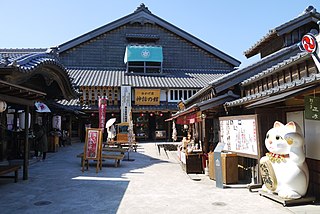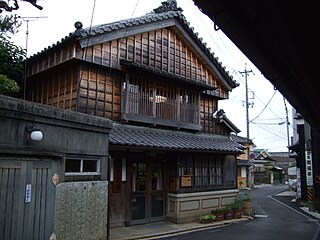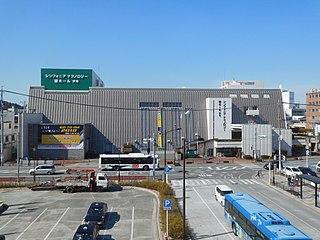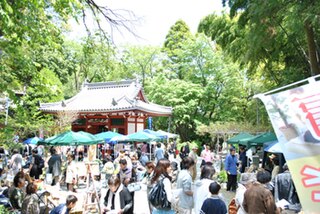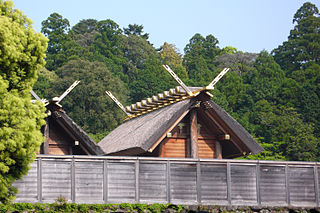8 Sights in Ise, Japan (with Map and Images)
Legend
Welcome to your journey through the most beautiful sights in Ise, Japan! Whether you want to discover the city's historical treasures or experience its modern highlights, you'll find everything your heart desires here. Be inspired by our selection and plan your unforgettable adventure in Ise. Dive into the diversity of this fascinating city and discover everything it has to offer.
1. Nice old town
Okage Yokocho is a tourist destination that reproduces the townscape of Torii-mae Town from the end of the Edo period to the early Meiji era, which was crowded with visitors to Ise Jingu in front of the Ise Jingu Emperor Grand Shrine (Inner Shrine) in Ise City, Mie Prefecture. It will be operated by Isefuku Co., Ltd., a subsidiary of Akafuku Co., Ltd., which produces and sells Ise's specialty Akafuku mochi. It is located in the middle of Oharai Town and is a tourist destination representing Ise-Shima.
2. 光明寺
Komyoji Temple is a Buddhist temple of the Rinzai sect of Tofukuji sect located in Iwabuchi 3-chome, Ise City, Mie Prefecture. The name of the mountain is Kinkozan. It is said to be the place of the end of the warlord Yuki Munehiro of the Southern Dynasty during the Northern and Southern Dynasties, and is known for the "one bell of Komyoji" that was the only bell tower allowed around Ise Jingu in the early modern period.
3. Isekawasakisyouninkan
The Ise Kawasaki Merchants' Museum is a facility that has been restored and maintained from the long-established sake wholesaler "Ogawa Shuten" founded in the middle of the Edo period, and has been revitalized as a historical and cultural exchange base while retaining the atmosphere of the merchant town of Kawasaki (Ise City) in the past. In 2001 (Heisei 13), 12 buildings were registered as national registered tangible cultural properties.
4. 伊勢市観光文化会館
The Ise City Tourism and Culture Center is a multi-purpose hall located in Iwabuchi 1-chome, Ise City, Mie Prefecture. It will be managed by K-Mix Public Business Co., Ltd., which is the designated administrator. The abbreviation is "Kanbun". In April 2017 (Heisei 29), naming rights were introduced, and Sinfonia Technology Hibiki Hall Ise is a nickname.
5. Taikoji
Taikoji Temple is a temple of the Shingon sect of the Daigo sect located in Ise, Mie Prefecture, Japan. The name of the mountain is also written as Mt. Shionzan and Oeji. It is an ancient temple that is said to have been founded by Gyoki during the Tenpei period, and is closely related to Ise Jingu Shrine and Futami Kodama Shrine. The thousand-handed Kanseon Bodhisattva of the main temple was created in the Kamakura period and is designated as an important cultural property. Currently, there is also a pet memorial clinic and a youth hostel Taieji Temple in the precincts, and it is also known as a famous place for wisteria and hydrangea.
6. Hinjitsukan
Hinjitsukan is a building located in Futami-cho Chaya, Ise City, Mie Prefecture, Japan. 1887 (Meiji 20) Completed. It has been designated as an important cultural property of Japan. It was built as a rest and accommodation facility for guests visiting Ise Jingu Shrine. It was built in a short period from December 1886 to February 1887 to coincide with Empress Hideteru's visit to Ise. From 1911 to 1999, it was used as an annex to the adjacent Futamikan. Currently, the museum is open to the public for a fee, and it is also used as a rental exhibition hall.
7. Ise-Jingu Geku
The Ise Shrine , located in Ise, Mie Prefecture of Japan, is a Shinto shrine dedicated to the solar goddess Amaterasu. Also known simply as Jingū (神宮), Ise Shrine is a shrine complex composed of many Shinto shrines centered on two main shrines, Naikū (内宮) and Gekū (外宮).
8. 伊勢シーパラダイス
Zero Distance Aquarium Ise Sea Paradise is an aquarium located in Futami Machie, Ise City, Mie Prefecture (formerly Futami Machie, Dokai District). Abbreviated name, Ise Sea Paradise (Ise Sea Paradise), Sea Para. It is adjacent to the scenic spot Futamiura. Operated by Ise Couplerock Paradise Co., Ltd. Until September 2015, it belonged to the Meitetsu Group. In October 2024, the name was changed from Ise Couple Rock Fureai Aquarium Sea Paradise.
Share
Disclaimer Please be aware of your surroundings and do not enter private property. We are not liable for any damages that occur during the tours.
